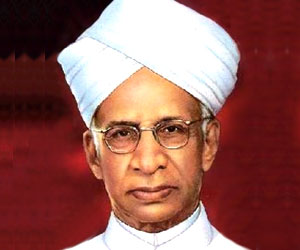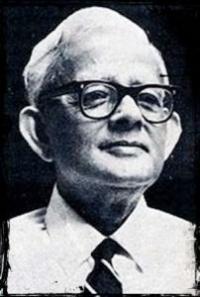Chapter 1
The Monastery in the Hills
The story opens in the remote Himalayas, where the head lama of the Ragyabas monastery fears that the Chinese will soon invade. He orders the transfer of the Panchen Lama's priceless jewels to the Indian government for safekeeping. The Chinese, however, learn of the plan and send two of their most ruthless spies to New Delhi to intercept the jewels.
Chapter 2
The Man from Peking
Jeet Mansingh, a colonel in the Indian Military Intelligence, is tasked with tracking down the Chinese spies. Even before his mission can start, he is attacked and injured, but he refuses to give up. With the help of his nurse, Rupa, Jeet follows the spies' trail through the streets of New Delhi and the corridors of power.
Chapter 3
The Qutub Minar
Jeet's investigation leads him to a Chinese restaurant in New Delhi, where he meets Chomo Jung, one of the Chinese spies. Chomo Jung is a ruthless and cunning man, and he quickly realizes that Jeet is onto him. Jeet and Chomo Jung engage in a cat-and-mouse game, with each trying to outwit the other.
Chapter 4
The Valley of the Moon
Jeet's investigation takes him to the Qutub Minar, where he believes the Chinese spies are hiding the jewels. He follows them to a secret chamber in the Minar, but they are able to escape. Jeet is captured by the Chinese, but he manages to escape and continue his pursuit.
Chapter 5
The Secret Chamber
Jeet tracks the Chinese spies to a small village in the Himalayas. He learns that they are planning to meet with a Tibetan agent who has information about the location of the Ragyabas monastery. Jeet infiltrates the meeting and learns that the monastery is located in a remote valley.
Chapter 6
The Return to Delhi
Jeet and Rupa travel to the remote valley where the Ragyabas monastery is located. They are able to find the monastery and meet with the head lama. The lama tells them that the jewels are hidden in a secret chamber in the monastery.
Chapter 7
The Medals
Jeet and Rupa return to New Delhi with the jewels. They are able to thwart the Chinese plot to steal the jewels and prevent them from falling into the wrong hands.
Major and minor characters
Jeet Mansingh: The main protagonist of the story. He is a colonel in the Indian Military Intelligence, and he is tasked with tracking down two Chinese spies who are trying to steal the Panchen Lama's priceless jewels. Jeet is a complex and well-developed character. He is intelligent, brave, and determined, but he is also flawed. He is arrogant and hot-headed, and he often makes impulsive decisions. However, he is also capable of great love and compassion, and he is ultimately redeemed by his courage and his willingness to sacrifice himself for his country.
Rupa: Jeet's nurse, and a key supporting character in the story. She is a young woman who is intelligent, resourceful, and compassionate. She is also fiercely loyal to Jeet, and she is willing to do whatever it takes to help him succeed in his mission. Rupa is a strong and independent woman, and she is a valuable asset to Jeet.
Chomo Jung: A ruthless and cunning Chinese spy who is determined to steal the Panchen Lama's jewels. He is a formidable opponent for Jeet, and he is ultimately responsible for Jeet's injuries.
Pempemp Kachin: A beautiful Chinese spy who uses her wiles to achieve her ends. She is a skilled manipulator, and she is able to get close to Jeet and Rupa in order to learn their secrets.
The head lama of the Ragyabas monastery: A wise and benevolent man who is determined to protect the Panchen Lama's jewels from falling into the wrong hands. He is a valuable ally to Jeet and Rupa, and he provides them with important information about the jewels.
General Kaul: Jeet's superior officer in the Indian Military Intelligence. He is a demanding and sometimes ruthless man, but he is also a fair and just leader.
Brigadier Singh: A colleague of Jeet's in the Indian Military Intelligence. He is a loyal and trustworthy friend, and he is always willing to help Jeet in his missions.
The Tibetan agent: A man who has information about the location of the Ragyabas monastery. He is initially reluctant to help Jeet, but he is ultimately persuaded by Rupa's compassion.
About the author
Manohar Malgonkar (12 July 1913 – 14 June 2010) was an Indian author of both fiction and nonfiction in the English language. He was also an army officer, a big game hunter, a civil servant, a mine owner and a farmer.
Malgonkar was born in Jagalbet, near Londa in Belgaum district. From his maternal side, his great-grandfather had been governor of Gwalior State. He began his education in Belgaum. He later attended school in Dharwad and graduated from Mumbai University. After, he joined the army and rose to the rank of Lieutenant Colonel in the Maratha Light Infantry. He retired from service at the age of 39. He also stood for parliament. Most of that activity was during the build-up to Indian independence and its aftermath, often the settings for his works.
Malgonkar's writing is known for its sharp wit, its vivid descriptions of India, and its exploration of complex themes such as nationalism, imperialism, and the Indian independence movement. He was a prolific writer, and his works include novels, short stories, essays, and biographies. Some of his most famous works include The Princes, A Bend in the Ganges, The Devil's Wind, and Spy in Amber.
Malgonkar was awarded the Padma Bhushan, India's third-highest civilian honor, in 1972. He was also a recipient of the Sahitya Akademi Award, India's highest literary honor, for his novel The Princes in 1963.
Malgonkar died in Pune, Maharashtra, on 14 June 2010, at the age of 96. He was survived by his wife, two sons, and a daughter.
Here are some of Malgonkar's most notable works:
The Princes (1963): A historical novel set in the princely states of India during the British Raj.
A Bend in the Ganges (1969): A historical novel set in India during the Indian independence movement.
The Devil's Wind (1972): A novel about the Indian army's campaign in the North-East Frontier Agency during the 1962 Sino-Indian War.
Spy in Amber (1977): A spy thriller set in India during the early 1960s.
Distant Drum (1960): A semi-autobiographical novel about Malgonkar's experiences in the Indian army.
Malgonkar's works are still widely read and enjoyed today. They are a valuable contribution to Indian literature, and they offer insights into the history, culture, and politics of India.













.jpg)




